术后持续疼痛与术后并发症的关系
【 poss|【罂粟摘要】术后持续疼痛与术后并发症的关系:一项多中心前瞻性队列研究】 :一项多中心前瞻性队列研究
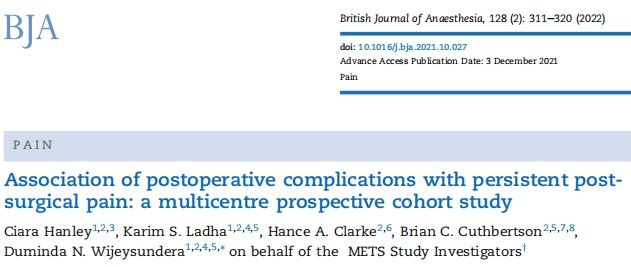
文章插图
贵州医科大学 麻醉与心脏电生理课题组
翻译:胡廷菊 编辑:马艳燕 审校:曹莹
摘要
背景:术后持续疼痛是一个棘手的问题,很难处理,且人们对此认识不足。研究发现术后并发症可能是术后持续疼痛的危险因素。我们对一项关于术前运动耐受测量(METS)的队列研究进行二次分析,描述术后30天和术后1年持续疼痛和主要并发症的关系。
方法:这项分析包括行非心脏手术的1313名住院病人(年龄≥40岁),这些病人术后生存期大于1年。共同的主要结局是术后30天疼痛和术后1年疼痛。术后疼痛被定义为疼痛或中到重度不适以及与术前相比疼痛或不适没有改善。主要暴露是重要的院内并发症(以改良的Clavien-Dindo标准评为中到重度)。用多变量回归模型描述调整后的重要并发症和预后的关系。
摘要
结果:在队列研究的患者中,12%(n=163)发生了重大并发症,51%(n=674)发生了术后30天疼痛,42%(n=545)发生了术后1年疼痛。重大并发症与术后30天疼痛(调整后的优势比为1.54,95% CI为1.05-2.23)及术后1年疼痛(调整后的优势比为1.42,95% CI为0.98-2.06)有关。当对缺失的协变量和结果数据进行多重填补后重复分析时,术后并发症与术后30天和1年疼痛有关。
结论:术后出现重大并发症的患者更可能存在术后30天或术后1年疼痛。然而,需要更多研究来证实这些发现和描述潜在的机制。
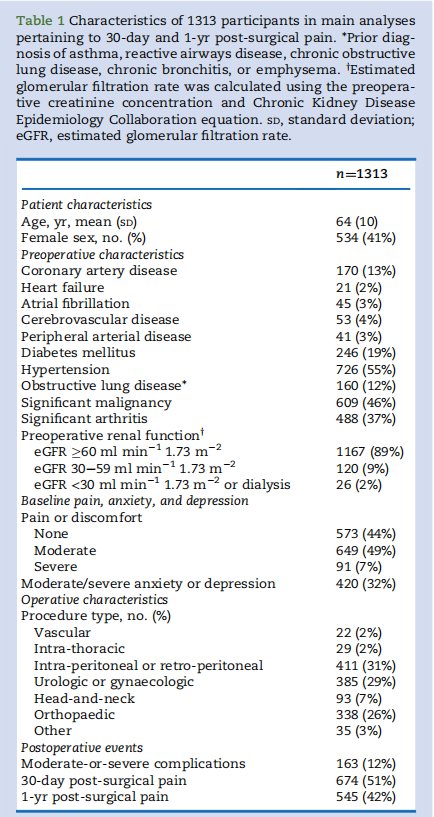
文章插图
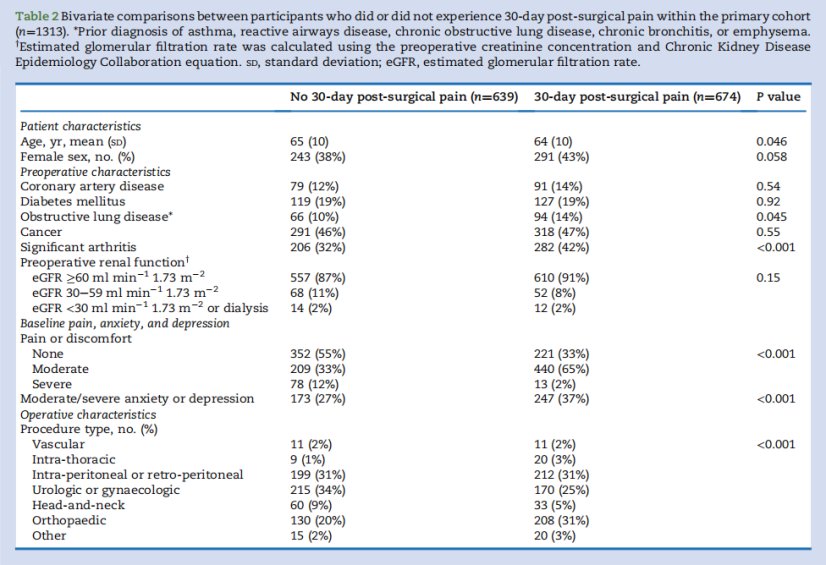
文章插图
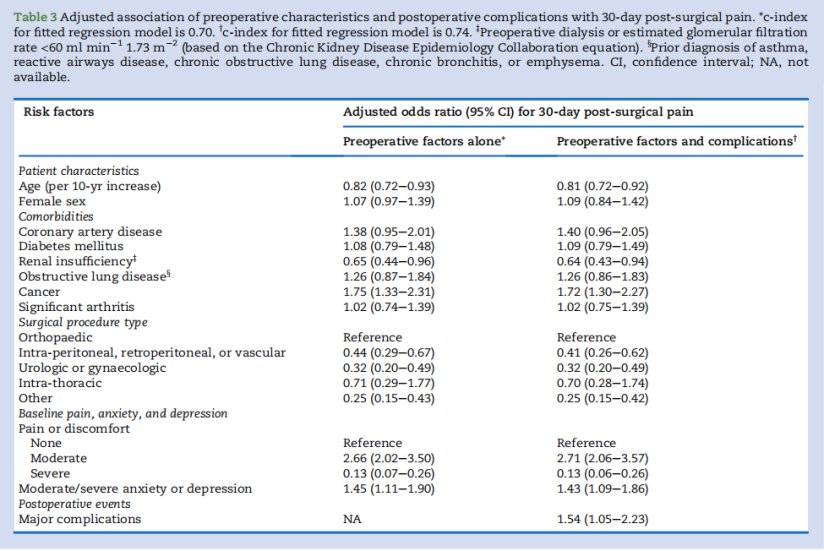
文章插图

文章插图
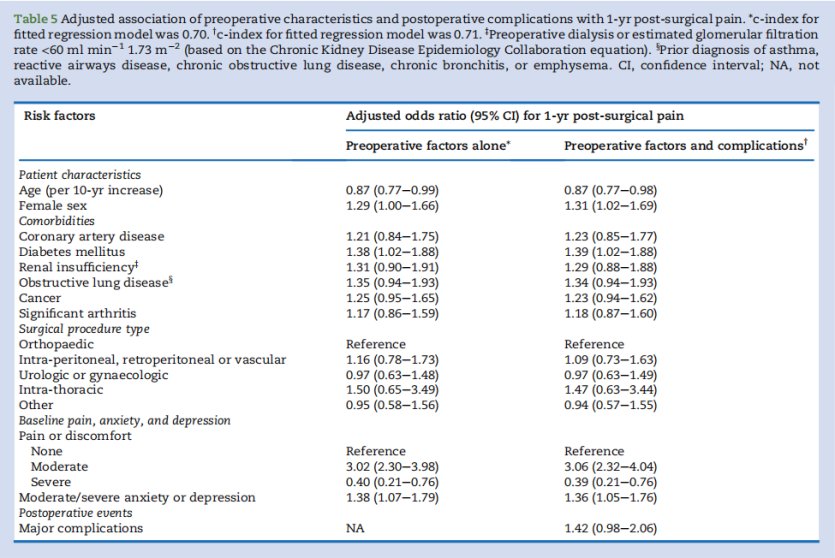
文章插图
原始文献来源:Ciara Hanley , Karim S. Ladha , Hance A. Clarke, et al. Association of postoperative complications with persistent post-surgical pain: a multicentre prospective cohort study. [J] Br J Anaesth. 2022 Feb;128(2):311-320.doi: 10.1016/j.bja.2021.10.027. Epub 2021 Dec 3.
英文原文
Association of postoperative complications with persistent Post-surgical pain: a multicentre prospective cohort study
Background: Persistent post-surgical pain is an important and under-recognised problem that is dificult to treat. Postoperative complications have been identified as possible risk factors for persistent post-surgical pain. We conducted a secondary analysis of the Measurement of Exercise Tolerance before Surgery (METS) cohort study to characterise the association of major postoperative complications with post-surgical pain at 30 days and 1 yr after major surgery.
Method:The analysis included 1313 participants ( 40 yr old) who had inpatient noncardiac surgery and survived for 1 yr. The co-primary outcomes were 30-day post-surgical pain and 1-yr post-surgical pain. Post-surgical pain was defined as pain or discomfort that was of moderate or severe intensity (EuroQoL-5D [EQ-5D] instrument) and unimproved compared with preoperative pain or discomfort. The principal exposure was major in-hospital complications (moderate or severe by modified Clavien-Dindo criteria). Multivariable logistic regression modelling was used to characterise the adjusted association of major complications with outcomes.
Results:Of the cohort, 12% (n=163) experienced major complications, 51% (n=674) reported 30-day post-surgical pain, and 42% (n=545) reported 1-yr post-surgical pain. Major complications were associated with 30-day post-surgical pain (adjusted odds ratio [aOR]=1.54; 95% confidence interval [CI], 1.05-2.23) and possibly 1-yr post-surgical pain (aOR=1.42; 95% CI, 0.98-2.06). When analyses were repeated after multiple imputation of missing covariate and outcome data, complications were associated with both 30-day and 1-yr post-surgical pain.
- 青少年补钙误区
- 老人常吃这个可以预防头晕
- 哺乳期吃西瓜应该注意这些
- 脱发严重吃这些食物可以防脱发
- 河北宣化:下乡送医
- 儿童白癜风饮食禁忌
- 乳腺增生吃何物?常吃海带助治疗
- 吃什么有助于小儿脑瘫的预防
- 冠心病患者需注意的饮食习惯
- 肾结石吃这些水果帮助排石
